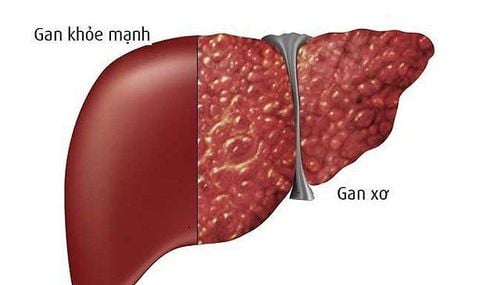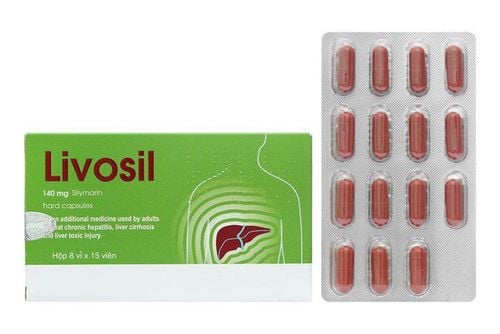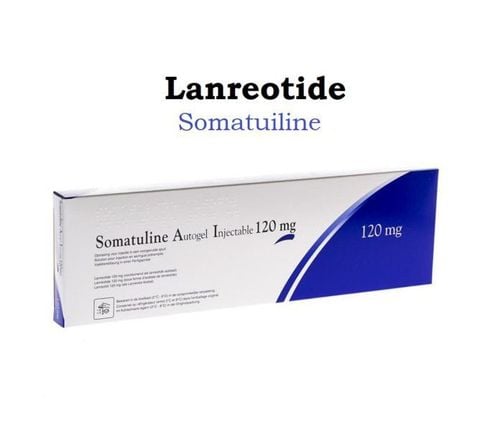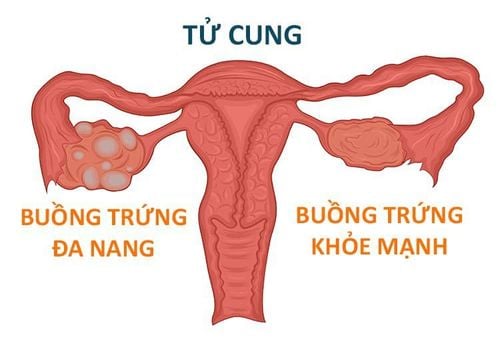This is an automatically translated article.
Post by Master, Doctor Mai Vien Phuong - Gastrointestinal endoscopist - Department of Examination & Internal Medicine - Vinmec Central Park International General Hospital
The G protein-coupled receptor is associated with distinct G protein families, including Gs, Gi, and Gq. Heterotrimeric G proteins are involved in the signaling of about 800 members of the G protein-coupled receptor. Some of these signaling pathways play an important role in liver metabolism.
1. The role of some G protein-coupled receptors in liver diseases
To date, several G protein-coupled receptors have been shown to play an important role in common liver diseases. Several important G protein-coupled receptors have potential clinical value at various stages of liver disease, from NAFLD to HCC. For example, GPR120 is a functional receptor for ω-3 fatty acids with potent anti-inflammatory and insulin resistance effects. The role of G protein-coupled receptors in common liver diseases is as follows:
| Bệnh gan | Thụ thể protein G | Biểu hiện |
| NAFLD / Steatosis | GPR120 | Điều trị cpdA chủ vận GPR120 làm tăng độ nhạy insulin và dung nạp glucose và giảm nhiễm mỡ gan ở chuột béo phì do HFD |
| HCC | GPR49 | GPR49 được thể hiện nhiều trong các dòng tế bào HCC của con người PLC / PRF / 5 và HepG2; sự biểu hiện quá mức của GPR49 trong mô HCC với sự đột biến của beta-catenin exon 3 cũng được hiển thị |
| Tổn thương gan / xơ hóa | GPBAR1 | GPBAR1 là một bộ điều chỉnh ngược dòng biểu hiện trục của chemokine CCL2 và thụ thể CCR2 của nó trong giao diện của các tế bào hình sin gan |
| NASH / xơ hóa | GPR91 | Succinate trong gan nhiễm mỡ có thể kích hoạt HSC thông qua thụ thể GPR91, dẫn đến tiến triển NASH |
Abbreviation: HCC: Hepatocellular carcinoma; HFD: High-fat diet; HSC: Liver astrocytes; NAFLD: Non-alcoholic fatty liver disease.
G protein-coupled receptor GPR49 GPR49, a G protein-coupled receptor with unidentified ligands, is highly expressed in human hepatocellular carcinoma (HCC) cell lines PLC/ PRF/5 and HepG2. In addition, overexpression of GPR49 was shown in HCC tissue with mutation of beta-catenin exon three. Another single G protein-coupled receptor, GPR137, is also widely expressed in human liver cancer cell lines, such as HepG2 and Bel7404. Depletion of GPR137 by lentiviral-mediated RNA interference in these two cell lines significantly inhibited proliferation and colony formation. Knockdown of GPR137 in HepG2 cells resulted in cell cycle arrest and apoptosis, suggesting that targeting GPR137 could inhibit cancer growth. Furthermore, low expression of GPR137 suggests progression of human HCC and low survival.
GPR132 or G2A receptor The GPR132 or G2A receptor is a proton-sensing G protein-coupled receptor and plays an important role in cell cycle and proliferation, oncogenesis, and immune response. GPR132 is also involved in hepatic lipid metabolism and gallstone formation in mice, as GPR132-deficient mice fed a high-fiber diet rapidly develop gallstones and have a high cholesterol saturation index.

2. Not all G protein-coupled receptors protect against liver disease
Succinate is increased in fatty liver cells of a high-fat/calorie-plus-fructose and high-glucose diet in water-drinking rats. Succinate exposure upregulated the expression of GPR91 in primary and immortalized HSCs, increasing the expression of ECM proteins by these cells. Inhibition of GPR91 expression by shRNA-containing virus reduces succinate-mediated HSC activation. Meanwhile, expression of GPR91 was correlated with fibrosis severity in human NASH biopsies. GPR55 and its endogenous ligand, l-α-lysophosphatidylinositol are positively correlated with obesity and type 2 diabetes (T2D). Furthermore, GPR55-deficient (GPR55 -/-) mice showed impaired insulin signaling as evidenced by decreased phosphorylation of protein kinase B and its downstream targets, with a significant increase in total body fat and liver fatty acid synthesis, which can lead to the development of hepatic steatosis.
In the same study, the author also found that lysophosphatidylinositol activated mouse H4IIE hepatocytes and human HepG2 hepatocytes through GPR55 to enhance insulin-dependent protein kinase B phosphorylation. Removal of GPBAR1, a G protein-coupled receptor for secondary BAs, increases the severity of acetaminophen-induced liver injury. Furthermore, GPBAR1 agonism mediates the axial expression of the chemokine CCL2 and its receptor CCR2 in the interface of hepatic sinusoidal cells.
3. G protein-coupled receptor signaling and regulatory proteins In general, G protein-coupled receptors are associated with distinct G protein families, including Gs, Gi, and Gq. For example, the glucagon receptor most expressed in hepatocytes is associated with the excitatory G proteins, Gs. Heterotrimeric G proteins are involved in the signaling of approximately 800 G protein-coupled receptor family members. Several of these signaling pathways play an important role in liver metabolism. For example, ablation of the Gα 12 protein (Gα 12) significantly increased starvation-induced fat accumulation in the liver of mice, and Gα 12 expression was also decreased in liver biopsies of NAFLD patients.
A mechanistic study showed that, Gα 12 regulates mitochondrial respiration through regulation of sirtuin 1 and peroxisome-activated receptor alpha expression. Furthermore, the expression of Gα12 was associated with the overall survival of HCC patients. Understanding the role of G protein in the liver also opens up the role of G protein-coupled receptors in liver metabolism and disease progression.

Please dial HOTLINE for more information or register for an appointment HERE. Download MyVinmec app to make appointments faster and to manage your bookings easily.
References:Yang M, Zhang CY. G protein-coupled receptors are potential targets for the treatment of nonalcoholic fatty liver disease. World J Gastroenterol 2021; 27 (8): 677-691 [PMID: 33716447 DOI: 10.3748 / wjg.v27.i8.677 ]














